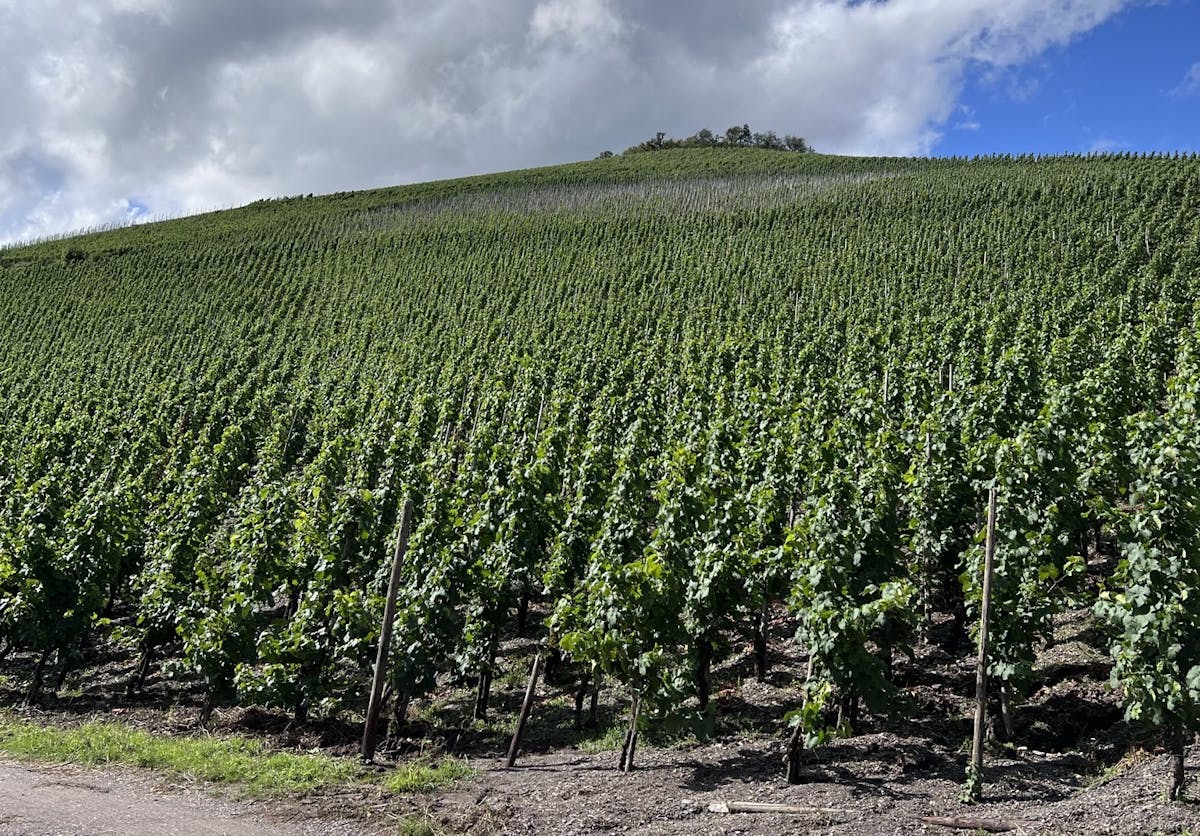Vineyards Are Not Natural: The Struggle With ‘Organics’
The wine world needs to have an honest, thoughtful conversation about farming choices and craft that into a message that consumers can understand.

On my latest wine trip, the producers I visited had one thing in common — they all produce spectacular wine, which I love to drink. They also seemed to fall into one of two categories: those who farm organically (certified or practicing included) and those who do not. A more distinguishing feature than their farming methods or resulting wines was the way they spoke about their choices in the matter.
Roughly a third of the producers were not certified or practicing organic, and all but one of them expressed what felt like embarrassment over their non-organic interventions. They tended to co-opt “green” language like the word “natural” to describe their decidedly un-natural interventions.
The most blatant of these misrepresentations is the claim that vineyards themselves are natural, when in fact vitis vinifera can’t even be planted in 99 percent of the world without first being grafted to an engineered trunk. Grape vines would much prefer to climb up trees than be uniformly trellised, avoid the mutilation of pruning, and live long lives free of the fear of being grubbed up every 20 years for higher yields. Vineyards themselves are not natural.
This is a broader problem in the wine industry — not just with growers, and not just with the ones I met with on this trip, but with wine marketing boards and wine sellers in general. How do you have an honest, thoughtful conversation about your farming choices and craft that into a message that consumers can understand?
There are many valid reasons to avoid committing to organic farming, costs being one of the biggest. Organic sprays and fertilizers are two to five times the price of their chemical counterparts. Labor needs are significantly increased: by as much as 2,000 man hours per hectare, per year. This number can increase even further in steeper, harder-to-work sites, like the Mosel and Wachau; or in especially wet climates like Champagne and Bordeaux; or during particularly rainy vintages like 2021. Supply of labor is already a significant issue in many wine-producing countries like France, Australia, and America.
Loss of yields can make the cost increases untenable, though this point is debatable, with many top-tier organic producers stating they bounce back to pre-conversion levels within three vintages. The best winemakers already tend to limit yields, as they aren’t farming bulk wine whose quantities can only be achieved through chemical fertilizers. Also, wet vintages, like 2021 in Northern Europe or 2011 in California, can result in huge or even total losses of crops if there is no access to chemical fungicides.
On the other side, no organic producer I’ve had the discussion with has pretended like organics is the unequivocal best farming solution. There are plenty of drawbacks, and the negatives are pointed out, often candidly. Julian Haart of Piesporter in the Mosel said he has to use his tractor to spray five times as often as non-organic farmers, increasing his carbon footprint in a big way. He questions constantly whether this is the responsible choice.
In addition to increasing the use of fossil fuels, added tractor runs lead to soil compression, degrading humus and the all-important biosphere of topsoil. Organic fungicides, like copper, have to be sprayed up to 10 times more often than their synthetic counterparts. This means heavy metals build up in the soils and can find their way into groundwater.
This phenomenon, of conventional farmers co-opting green language, has felt like a gradual shift. When I started visiting wineries 10 years ago, growers tended to be far more blunt and truthful about their experiences. At the most there could be defensiveness if they felt an agenda was being pushed on them by people who had never actually farmed. If anything there was often a misunderstanding about the methods and functionality of organic farming.
Who can blame them, though? In the grand scheme of things, organic farming is a new phenomenon (albeit one that was simply called “farming” before the discovery of transforming atmospheric air into liquid ammonia).
The International Organisation of Vine and Wine, a group dedicated to scientific and technical reference to the wine world, started tracking organic vineyards in 2005. Eighteen years ago only 2 percent of the world’s vineyards were organic. In 2019, the last year data were compiled, that number had increased to more than 6 percent. This percentage is thought to be drastically under-representative of the actual acreage of organic vineyards, due to a lack of reporting from some wine-producing countries, and it also doesn’t include vineyards that eschew certification but nonetheless practice organic farming, or better.
In less than 20 years, thanks to the growing specter of climate change, the wine world has frantically pivoted toward organic and sustainable viticulture. Along the way it’s adopted a new code of green-speak, with words like “natural” being used to signifying words like better, responsible, ecological, healthy and virtuous.
Now, most conventional farmers know what organics are about, but choose not to convert anyway (often for very valid reasons). Nonetheless, they too have witnessed the power of the conversation around it, not least on consumers. People everywhere are recognizing that their food choices matter both for their own health and their effect on the planet. Wine drinkers are quickly catching on to the fact that wine is food, an agricultural product whose purchasing choices can make an impact. I venture to guess that the will to influence those decisions is at least one reason for all the spin.
One recent example was regarding tilling. An employee at a famous winery was expounding on the virtues of tilling, repeating multiple times how it was natural to till, natural to open the soil multiple times in the growing season, natural to cut the side roots to encourage them to dig down for more access to minerals, and how it naturally releases the natural gasses trapped there. While the virtues of tilling can and will continue to be hotly debated by farmers everywhere, the fact is ground can’t till itself; it is a man-made act, the very opposite of natural. Also, those gasses he was so proud of releasing? Carbon dioxide is the main one.
What was even more surprising was that besides the tilling and relatively necessary fungicide use, the same winery stopped spraying chemicals in its vineyards years ago. But to get them to talk about the actual very positive, environmentally sustainable actions they were taking, I had to press them with multiple specific questions about each of those other steps, and only after they extolled their “natural” farming techniques.
Co-opting environmentally green language is false or misleading, and only helps to confuse consumers further. In the end, it isn’t about whether a wine is organic. Is the wine good? Are the winemakers considerate people? Are they thoughtfully weighing their positions in the world and how they can positively affect change in other ways?
None of us are perfect, and I don’t think anyone expects a farmer to be either. It is much more compelling of a narrative to hear someone justify actions taken, expressed in basic terms: “Hey, we can’t convert, because A, B, and/or C.”
The obfuscation of the concepts of holistic farming hurts more than just the growers who are actually investing in the hard work. Our interest in saving the planet has to transcend simple consumerism and its messaging. Consumers should be given the opportunity to understand that good farming doesn’t have to be organic and good wine doesn’t only come from organic vineyards. But that can only happen when everyone involved is communicating in a straightforward manner.

